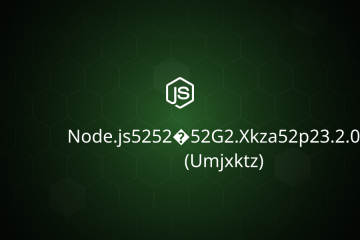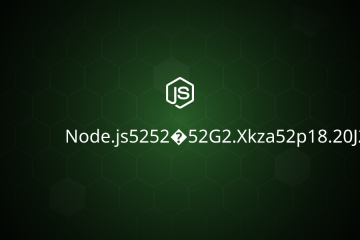4 ES2015 features that you’ll use on a daily basis with Vue
- Arrow functions
- Template literals
- Modules
- Destructuring and spread syntax
1. Arrow functions
Arrow functions are a new way to declare JavaScript functions. They provide a shorter syntax, but differ from regular JavaScript function in other ways, too.
// Regular JavaScript function
function(parameters) {
statements
}
// Arrow function
(parameters) => {
statements
}
No bound this
An important feature of arrow functions is that they do not bind a value for this. Instead, they use the this of the enclosing context.
Consider JavaScript array methods requiring a callback function.Array.filter , for example, allows you to return a new array only including those items that match the filter defined by the callback.
One of the great features of Vue.js is that you can easily access data properties, computed properties and methods as this.vueProperty from within the context of the Vue configuration object.
If you use a regular function for a callback, however, it will bind its own value for this. You can’t then refer to properties of the Vue object as this.vueProperty from within the callback, you have to manually create them somewhere in the scope of the callback.
In the below example, size is a data property. In the filterBySize computed property, we need to declare a variable size so this value can be used in the filter callback:
new Vue({
data: {
size: 'large',
items: [ { size: 'small' }, { size: 'large' } ]
},
computed: {
filterBySize() {
let size = this.size;
return this.items.filter(function(item) {
return item.size === size;
// Note: this.size is undefined
});
}
}
});
An arrow function uses the this object from the enclosing context. In this case, it’s from the filterBySize computed property, which has the Vue object bound to this, which simplifies the filter callback:
filterBySize() {
return this.items.filter((item) => {
return item.size === this.size;
});
}
Gotcha
While arrow functions can be used effectively in many situations, it doesn’t mean we should use them all the time when developing Vue. Indeed, you should never use arrow functions as function properties on Vue configuration object as these need access to the this context from the Vue constructor.
// Regular function
var regular = new Vue({
data: {
val: 'Hello world'
},
computed: {
upperCase() {
return this.val.toUpperCase();
}
}
});
console.log(regular.upperCase); // HELLO WORLD
// Arrow function
var arrow = new Vue({
data: {
val: 'Hello world'
},
computed: {
upperCase: () => {
return this.val.toUpperCase();
}
}
});
console.log(arrow.upperCase);
// Uncaught TypeError: Cannot read property 'toUpperCase' of undefined
Single parameter and implicit return
You can make arrow function syntax even terser in certain scenarios. If you only have one parameter for your function, you can drop the brackets (). If you only have one expression in your function, you can even drop the curly braces {} !
Here’s the array filter callback from above with those shorthands implemented:
filterBySize() {
return this.items.filter(item => item.size === this.size);
}
Read more about arrow functions on MDN.
2. Template literals
Template literals use backticks (“) instead of double or single quotes to define a string.
Template literals allow us to do two super-useful things in Vue.js:
- Multi-line strings (great for component templates)
- Embedded expressions (great for computed properties)
Multi-line strings
Writing a template in JavaScript code is not ideal, but sometimes we want/need to. But what if the template has a lot of content? Pre-ES2015, we have two options:
First, put it all on one line:
Vue.component({
template: '<div><h1></h1><p></p></div>'
});
This is really hard to read when the line gets long.
Second option: make it multi-line. Due to how JavaScript strings are parsed, you’ll need to break the string at the end of each line and join it up again with a +. This makes the template much harder to edit:
Vue.component({
template: '<div>' +
'<h1></h1>' +
'<p></p>' +
'</div>'
});
Template literals solve the problem as they allowing multi-line strings without requiring the string to be broken up:
Vue.component({
template: `<div>
<h1></h1>
<p></p>
</div>`
});
Embedded expressions
Sometimes we want a string to by dynamic i.e. include a variable. This is very common in computed properties where you may want to interpolate a string in the template which is derived from a reactive Vue.js data property.
Using regular strings, we have to break up the string to insert a variable and join it back together with +. Again, this makes the string hard to read and edit:
new Vue({
data: {
name: 'George'
},
computed: {
greeting() {
return 'Hello, ' + this.name + ', how are you?'
}
}
});
By using a placeholder ${} in a template literal, we can insert variables and other expressions without breaking the string:
new Vue({
data: {
name: 'George'
},
computed: {
greeting() {
return `Hello, ${this.name}, how are you?`
}
}
});
Read more about template literals on MDN.
3. Modules
How do you load a JavaScript object from one file into another? There was no native way to do it pre-ES2015. Using JavaScript modules, we can do it with export and import syntax:
file1.js
export default {
myVal: 'Hello'
}
file2.js
import obj from './file1.js';
console.log(obj.myVal); // Hello
Modules offer two key benefits:
- We can split our JavaScript app up into multiple files
- We can make certain code reusable across projects
Component modules
One great use case for module files is component. Pre-ES2015, we’d need to put all our component definitions in the main file including our Vue instance e.g.
app.js
Vue.component('component1', { ... });
Vue.component('component2', { ... });
Vue.component('component3', { ... });
new Vue({ ... });
If we keep doing this, our app.js file will get very large and complicated. Using modules, we can put our component definitions in separate files and achieve better organization, e.g.:
component1.js
export default {
// component definition
};
We can now import the component defintion object now in our main file:
app.js
import component1 from './component1.js';
Vue.component('component1', component1);
//...
An even better option for modularizing your components is to utilize Single-File Components. These make use of JavaScript modules, but also require a build tool like Webpack.
4. Destructuring and spread syntax
Objects are an essential part of Vue.js development. ES2015 makes it easier to work with object properties through some new syntax features.
Destructuring assignment
Destructuring allows us to unpack object properties and assign them to distinct variables. Take the following object myObj . To assign its properties to new variables, we use the . notation:
let myObj = {
prop1: 'Hello',
prop2: 'World'
};
const prop1 = myObj.prop1;
const prop2 = myObj.prop2;
Using destructuring assignment, we can do this more succinctly:
let myObj = {
prop1: 'Hello',
prop2: 'World'
};
const { prop1, prop2 } = myObj;
console.log(prop1);
// Output: Hello
Destructuring is useful in Vuex actions. Actions receive a context object which includes properties for the state object and the commit API method:
actions: {
increment (context) {
// context.state
// context.commit(...)
}
}
It’s common, though, that you don’t need the state property in an action, and only want to use the commit API. By using a destructuring assignment in the function profile, you can create a commit parameter for use in the body, reducing the verbosity of this function:
actions: {
increment ({ commit }) {
commit(...);
}
}
Spread syntax
Spread syntax allows us to expand an object into a place where multiple key/value pairs are expected. To copy information from one object to another pre-2015, we’d have to do it like this:
let myObj = {
prop1: 'Hello',
prop2: 'World'
};
let newObj = {
name: 'George',
prop1: myObj.prop1,
prop2: myObj.prop2
};
console.log(newObj.prop1); // Hello
Using the spread operator … , we can do this more succinctly:
let newObj = {
name: 'George',
...myObj
};
console.log(newObj.prop1);
// Hello
Taking an example from Vuex again, we often want to use our Vuex state properties as computed properties. Pre-ES2015, we’d have to replicate each one manually. For example:
store.js
new Vuex.Store({
state: {
prop1: ...,
prop2: ...,
prop3: ...
}
});
app.js
new Vue({
computed: {
prop1() {
return store.state.prop1;
},
prop2() {
return store.state.prop2;
}
...
}
});
Vuex provides the mapState fuction which returns an object with all the Vuex state properties that you specify by providing their keys:
import { mapState } from 'vuex';
var state = mapState(['prop1', 'prop2', 'prop3']);
console.log(state.prop1)
// { ... }
Using mapState in conjuction with the spread operator, we can combine local computed properties with those from Vuex in a very succinct way:
app.js
import { mapState } from 'vuex';
new Vue({
computed: {
someLocalComputedProp() { ... },
...mapState(['prop1', 'prop2', 'prop3'])
}
});



0 Comments